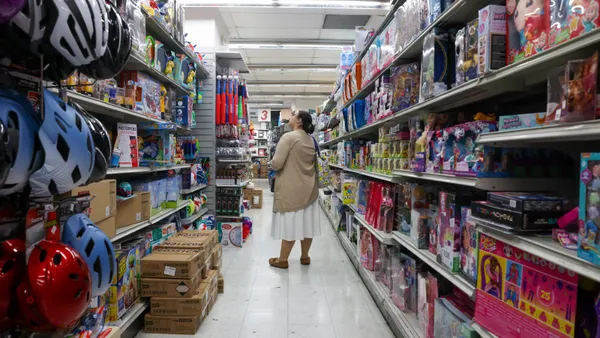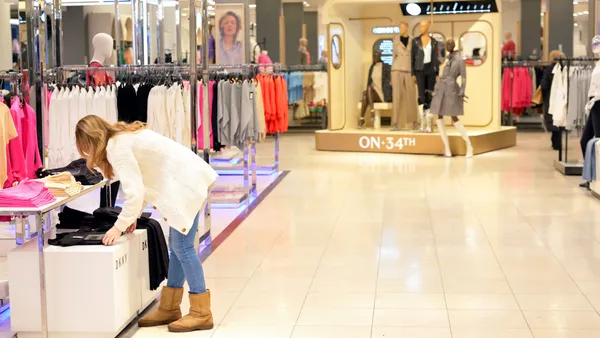Dive Brief:
-
With tariffs fostering price increases and economic uncertainty, retail sales in 2025 should grow between 2.7% and 3.7%, reaching $5.4 trillion to $5.5 trillion, the National Retail Federation said Wednesday.
-
A relatively strong labor market is helping align the upper end of the forecast with last year’s 3.6% annual sales growth (to $5.3 trillion); that also matches the average annual growth of the decade before the pandemic, the group said.
-
The NRF expects GDP growth in 2025 to be down nearly 2%, below last year’s 2.8% growth and the overall trend of the last few years.
Dive Insight:
Solid economic fundamentals, including strong employment and wage growth, buoyed retail sales last year and will support 2025’s consumer spending to some extent, but U.S. trade policy is disrupting that, according to several speakers participating in NRF’s virtual “State of Retail & the Consumer 2025” event Wednesday.
Later that day, President Donald Trump announced his latest trade moves: a universal baseline tariff of 10%, effective Saturday, plus specific duties on various countries. The new policies, which several analysts said would hit the apparel industry especially hard, add to a barrage of tariffs and threats of tariffs over several weeks that have roiled consumer confidence and sent retailers scrambling.
By contributing to higher prices and economic instability, the tariffs could discourage U.S. consumers in a way that previous economic pressures have not. Katherine Cullen, NRF vice president of industry and consumer insights, called the consumer “the real powerhouse” of the U.S. economy, fueling growth and productivity for a few years now, into the start of 2025.
Armed with about $10 trillion in pandemic-related stimulus support, consumers in the last four years kept spending, helping retail sales grow at twice the rate they did before the pandemic, she said. Stimulus savings helped consumers weather the early days of inflation. Even as those savings dwindled, wages outpaced inflation to the point where retail sales growth remained fairly healthy, Cullen said.
But tariffs are now testing consumers and businesses alike.
Many consumers previously traded down to cheaper options and turned to discounters and don’t have much more to trim, according to Cullen. Lower-income consumers, already battered by high prices on groceries and other essentials, are especially worried about tariff-related price increases, according to Kelly Pedersen, a partner and global retail leader at PwC.
“That group of consumers specifically is really nervous right now because many [are] at their wit’s end in terms of inflation, and can't really absorb more,” he said during the NRF event.
Sarah Wells, founder and CEO of a company selling bags and apparel for new mothers, said during the event that the uncertainty spurred by tariffs represents “the biggest challenge that my small business faces this year.”
“We're shifting our supply chain and our manufacturers, we're looking at all of our expenses and our team, we're engaging in advocacy and getting involved,” she said. “But the pressure on small business right now is significant, and I really think that this emphasizes the need for small businesses to share their story and why the impact of tariffs in the future really threaten the livelihood of small businesses like mine.”
U.S. shoppers have consistently defied expectations, telling surveys they’re tightening their budgets yet going on to spend at healthy rates, according to NRF Chief Economist Jack Kleinhenz. Lately, though, there’s evidence from other realms — and not just the dire survey results of recent weeks — that suggests a tougher road for retail, he said.
“It's the hard data on employment, income and tariff-induced inflation, not consumer sentiment, that supports our view of a slower trajectory for consumer spending,” he said during the event.













